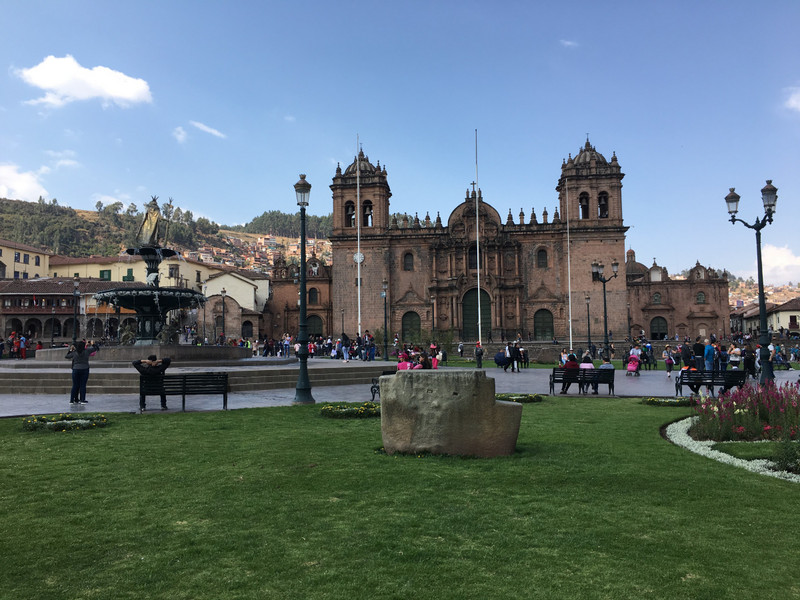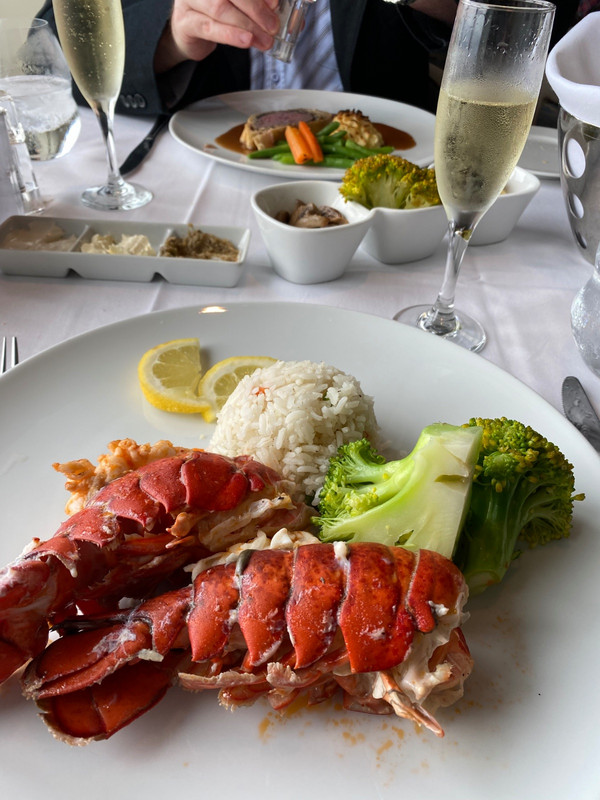Fresh off a trip to Machu Picchu, my and I decide to go out and explore Cusco. We were here briefly before we spent the day in Machu Picchu, but we really didnt get to take in the city and surrounding area. Now is our time. We make our way to Sacsayhuamn, a beautiful old site that looks like an archeological dig, and we walk around. We walk up and down these rock walls and just explore to the best of our abilities. The best known zone of Sacsayhuamn includes its great plaza and its adjacent three massive terrace walls. The stones used in the construction of these terraces are among the largest used in any building in America. They display a precision of cutting and fitting that is unmatched in the Americas. The stones are so closely spaced that a single piece of paper will not fit between many of the stones. This with the rounded corners of the blocks, the variety of their interlocking shapes, and the way the walls lean inward, is thought to have helped the ruins survive devastating earthquakes in Cusco. There were many beautiful sights other than this, and when
We saw two alpacas fighting with each other, and they were quite loud, but it was funny as they chased each other. There are several differences between an alpaca and a llama. Their ears: Alpaca ears have short ears while llamas have much longer, ears. Their size: Alpacas generally weigh in at around 150 pounds while llamas can get as heavy as 400 pounds. At the shoulder, an average alpaca stands between 34 and 36 inches, while a llama generally ranges between 42 and 46 inches. Their faces: Llamas have a longer face; an alpacas face is a bit more blunt, giving them a smooshed in look. Their purpose: For more than 5,000 years alpacas have been bred for fiber (and in Peru for meat as well), while llamas have been bred for the same amount of time as pack animals and meat. Their hair: The alpaca produces a much finer fiber than the llama. The alpaca also produces more fleece than its larger cousin and in a much greater variety of colors. Llamas also generally do not have as much hair on
their head and face as alpacas do. Their dispositions: Alpacas are very much herd animals, while llamas are more independent minded. Alpacas also tend to be a bit more skittish than llamas, which are often used as guard animals for alpacas, sheep, and other small livestock. Enough of the history. Just know this place was very beautiful, and I am thankful we went there to explore. We also went into a little museum which had many artifacts of the Incas as well as how things used to be in this area. On our way back, we stopped at a little factory that made articles out of the alpaca and llama wool. I purchased some socks there made from the wool. Another full day. Time to go back.
We all get rested and cleaned up, and then we proceed to go out into the city center to walk around. Many street vendors were out selling their arts, crafts, toys, etc. Some of the stuff I saw was unique, and the vendors appeared to put a lot of work into their craft. After looking around and taking many photos, we go out to have a meal. We decided between the three
of us we wanted to try the local cuisine; a local delight. We had already had Alpaca meat on a skewer, which was mighty tasty, but now we wanted something different...Cuy (guinea pig). Now Cuy is a delicacy in Peru. Livestock breeds of the guinea pig play an important role in folk culture for many indigenous Andean peoples, especially as a food source. The animals are also used in folk medicine and religious ceremonies. They are raised for their meat and are a culinary staple in the Andes Mountains. From what I was told, in the 1960s a modern breeding program was started in Peru that resulted in large breeds known as cuy mejorados (improved cuy). Marketers tried to increase consumption of the animal outside South America. Not so sure it would be a hit in the United States, but who knows.









